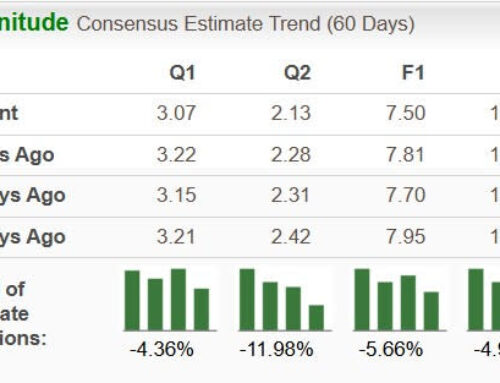Fix Our Forests Act divides environmental community
October 31, 2025
A new bill poised to pass the Senate after clearing the House will govern how the federal government thins, burns and otherwise manages nearly 200 million acres of the nation’s forests.
The Fix Our Forests Act, sponsored by U.S. Sens. John Hickenlooper, D-Colo., John Curtis, R-Utah, Tim Sheehy, R-Mont., and Alex Padilla, D-Calif., passed out of Senate committee recently in a rare show of bipartisan support, with 18 senators in favor and only five opposed.
“There is a wildfire crisis across much of the country — our communities need action now,” said Hickenlooper in a news release. “Wildfires won’t wait.”
The proposed legislation — the first major congressional effort to fight wildfires in recent history — includes provisions that promote prescribed burning and forest thinning in fire-prone areas along with working with communities to create defensible space around vulnerable homes. The bill formally recognizes wetlands as buffers against wildfires and encourages cross-boundary programs among counties, states and tribes. It also reauthorizes the 2009 Collaborative Forest Landscape Restoration Program, which provides money for groups working together on fire mitigation and forest health, said Michael O’Casey, public-lands director for the Theodore Roosevelt Conservation Partnership.
“When you’re out hunting and in the woods in Western forests, you can see a lot of woods aren’t in good shape,” he said. “They’re too thick and ready for fire, frankly.”
Over a century of fire suppression has left the forests in a weakened state, he added, creating problems that drought, climate change and disease have only intensified. O’Casey hopes the bill can help prevent the megafires that have increasingly scorched the West.
The Forest Service currently treats about 4 million acres each year, a drop in the bucket of the nation’s 193 million acres of forest. Forest managers need to get to work now in the places “where it’s needed most,” O’Casey said. “I have hope it will facilitate more management on forest lands to keep the health of ecosystems in mind.”
But the bill also comes with provisions that some say will streamline projects while others say it will fracture the nation’s bedrock environmental laws. Right now, for example, the Forest Service is permitted to log, burn or otherwise alter sections of forest only after a period of public comment or by following the National Environmental Policy Act process, unless the proposed project is relatively small and would not “have a significant effect on the human environment.” This kind of exemption has been permitted as an emergency declaration of sorts that generally only applies to projects up to 2,000 or 3,000 acres in size, said the Sierra Club’s Anna Medema. But the new bill would increase that threshold to 10,000 acres.
Another controversial provision would allow the Forest Service to log and change landscapes across a “fireshed management area” without first consulting with tribes and the public or following the environmental review process. A fireshed can be up to 250,000 acres in size, which is as large as many Western national forest ranger districts, said Blaine Miller-McFeeley, a legislative representative with Earth Justice.
Medema and Miller-McFeeley said both of these provisions will give the Forest Service permission to start massive projects with little public oversight. But O’Casey argued that they will enable the agency to act quickly to tackle projects that may have previously been mired in red tape.
Similarly, the bill limits judicial review by changing the current statute of limitations for lawsuits from six years to a mere 150 days. It also says that neither the Forest Service nor the Bureau of Land Management would be required to always work with the U.S. Fish and Wildlife Service to update forest plans to reflect newly listed endangered species or new information about currently listed species.

Other critics point out that the legislation appropriates no new funding for thinning forests or creating defensible space around houses threatened by fire. And the Forest Service is already drastically underfunded and understaffed; the Department of Agriculture has fired thousands of employees, said Susan Jane Brown, an Oregon-based staff attorney for Silvix Resources, a nonprofit environmental law firm.
Meanwhile, the Trump administration’s Big Beautiful Bill mandated that the Forest Service meet annual timber quotas, meaning the agency’s remaining staffers will likely be directed to approve logging projects, Miller-McFeeley cautioned.
“You tie those together, and it’s an existential threat to our forests and communities that survive because of them,” said Miller-McFeeley.
O’Casey understands the critics’ concerns. Any bipartisan bill requires compromise, he acknowledged. But he insists that the bill is not a congressionally authorized logging free-for-all. Plenty of Western forests have thick stands of timber of low commercial value, such as ponderosa and juniper, he said, and the forests need to be thinned. O’Casey believes the bill will encourage that work using the best available science. In the long term, he sees it as a net positive for old-growth forests, water supplies and fire-prone communities.
However, since the bill doesn’t come with appropriated new funds, he noted that cities, counties, tribal nations, states and nonprofits will have to continue to lobby to pay for projects like wetland restoration and community fire resiliency.
“There are a lot of people who are really afraid of the bill for what it could do rather than excited about what it could do,” he said.
Search
RECENT PRESS RELEASES
Related Post



